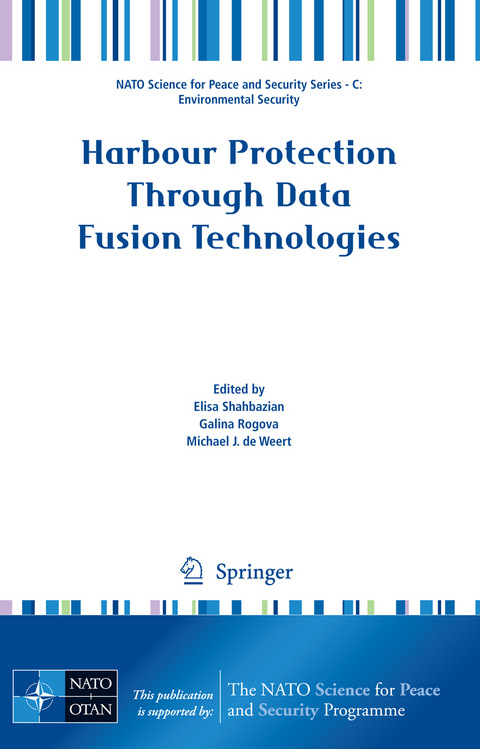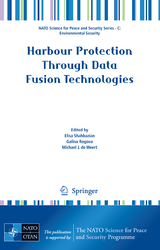Harbour Protection Through Data Fusion Technologies
Springer-Verlag New York Inc.
978-1-4020-8881-0 (ISBN)
CEP and Transport PB&Cs.- Implementation of the ISPS Code in Norwegian Ports.- Practical Implementation of the ISPS Code in the French Seaports.- PBIST and Its Projects, with Focus on Port Security.- Implementation of the ISPS Code in the Russian Federation: Ships and Ports.- Steps to Better Waterside Port and Harbor Security: The Development of Regional Maritime Safety Systems in the Russian Federation.- Police National Maritime Security Strategy.- Harbour Protection in the Jordanian Port of Aqaba.- Feasibility Study on Surveillance and Interdiction Technologies for the Port of Halifax.- Maritime Surveillance Information Availability in Estonia.- Case Study: The Reality of DF Technology Transition for Maritime Domain Awareness with a Focus on Container Security.- Cerberus.- Emerging Sensor Technologies and Metrics for Harbour Security.- Low Power Modular Sonar Systems.- An Unconstrained View of the Employment and Exploitation of Defence Data Fusion Technologies for Harbour Protection.- An Approach to Threat Assessment.- Harbour Protection and Higher Level Fusion: Issues and Approaches.- Perceptual Reasoning Managed Situation Assessment for Harbour Protection.- Understanding Military Information Processing — An Approach to Support Intelligence in Defence and Security.- Applying Decision Support and Data/Information Fusion/Management Concepts for Emergency Response in the Context of Harbour Protection.- Analyses of the Concept of Trust in Information Fusion and Situation Assessment.- Issues with Developing Situation and Threat Assessment Capabilities.- Distributed Data Fusion and Maritime Domain Awareness for Harbour Protection.- Intelligent Geo-Information Systems and Harbour Protection.- Using Modeling and Simulation as a Framework for Testing New Solutions Devotedto Securing Global Flows of Goods and People.- Fusion of Information from Disparate Electro-Optical Imagers for Maritime Surveillance.- Automatic Video Surveillance of Harbour Structures.- Heterogeneous Sensors Data Fusion Issues for Harbour Security.- Ship Detection and Characterization Using Polarimetric SAR Data.- Quick Joint Detection and Fusion Applications in Passive Surveillance Systems.- The Quiet Interlude Processing System (QuIPS) — An Automated Data Fusion Capability for Littoral Environments.- Sensor Data Processing for Tracking Underwater Threats Using Terascale Optical Core Devices.- A New Neural Approach for Pattern Recognition in Space Imagery.- Concurrent Self-Organizing Maps — A Powerful Artificial Neural Tool for Biometric Technology.- Sensor-Fusion in Neural Networks.- Target Identification Based on DSmT.- Particle Filter Application to Localization.- Restrictive Estimation in Tracking Problems.- Findings of the NATO Workshop on Data Fusion Technologies for Harbour Protection.
| Reihe/Serie | NATO Science for Peace and Security Series |
|---|---|
| Zusatzinfo | XX, 360 p. |
| Verlagsort | New York, NY |
| Sprache | englisch |
| Maße | 155 x 235 mm |
| Themenwelt | Informatik ► Grafik / Design ► Film- / Video-Bearbeitung |
| Mathematik / Informatik ► Informatik ► Netzwerke | |
| Informatik ► Theorie / Studium ► Künstliche Intelligenz / Robotik | |
| Informatik ► Weitere Themen ► Hardware | |
| Mathematik / Informatik ► Mathematik ► Angewandte Mathematik | |
| Sozialwissenschaften | |
| Technik ► Bauwesen | |
| ISBN-10 | 1-4020-8881-7 / 1402088817 |
| ISBN-13 | 978-1-4020-8881-0 / 9781402088810 |
| Zustand | Neuware |
| Haben Sie eine Frage zum Produkt? |
aus dem Bereich




